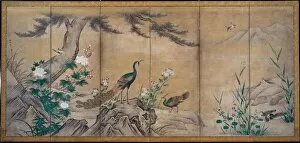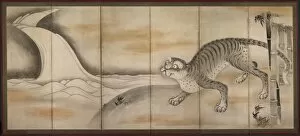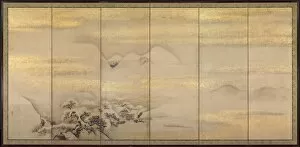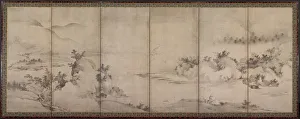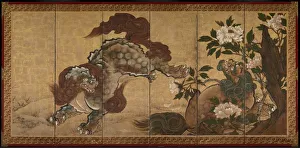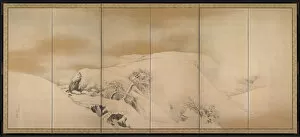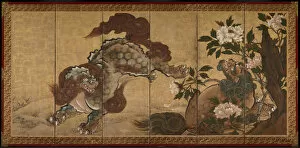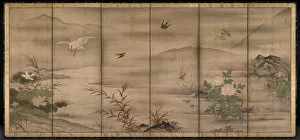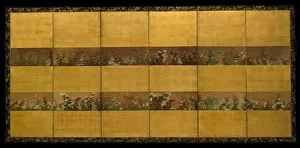Six Panel Folding Screen Collection
This collection of six-panel folding screens showcases the exquisite artistry and cultural significance of Japanese paintings from different time periods
All Professionally Made to Order for Quick Shipping
This collection of six-panel folding screens showcases the exquisite artistry and cultural significance of Japanese paintings from different time periods. Birds, Trees, and Flowers, created in the late 1500s by Kano Shoei, immerses viewers in a serene natural scene filled with vibrant flora and delicate avian creatures. The artist's skillful brushstrokes bring life to every petal and feather. Soga Nichokuan's Tiger, crafted during the early to mid-1600s, captures the raw power and majestic beauty of this iconic creature. Its fierce gaze seems to pierce through the screen, leaving viewers in awe. In Tiger and Leopard by Sekkei Yamaguchi from 1668, two apex predators are depicted side by side. The intricate details highlight their contrasting characteristics while showcasing their undeniable strength. Kano Shoei returns with The Four Accomplishments from the late 1500s. This masterpiece portrays four noble pastimes: playing musical instruments, chess gamesmanship, calligraphy mastery, and elegant flower arranging—a celebration of refined skills. Kano Tan'yū's The Four Seasons (1668) takes us on a journey through nature's ever-changing beauty across spring blossoms, summer greens, autumn foliage, and winter tranquility—all captured with remarkable precision. An unknown artist presents Tartars Hunting in a Mountain Landscape from the first half of the 1600s—an action-packed scene depicting skilled riders pursuing prey amidst breathtaking mountainous terrain. Maruyama Okyo's Summer Night (1784) enchants viewers with its ethereal depiction of fireflies illuminating a moonlit garden—a captivating blend of reality and imagination that evokes a sense of serenity. The pair titled Summer and Winter Landscapes by Kano Naonobu transports us between seasons—summer radiates warmth as rivers flow gently beneath lush trees while winter reveals snow-covered landscapes adorned with skeletal branches.

